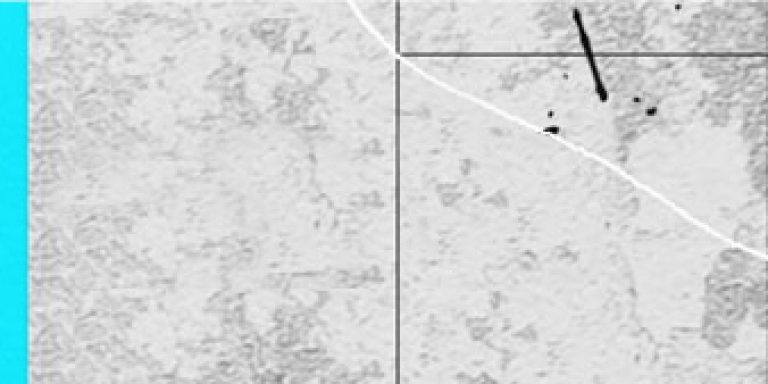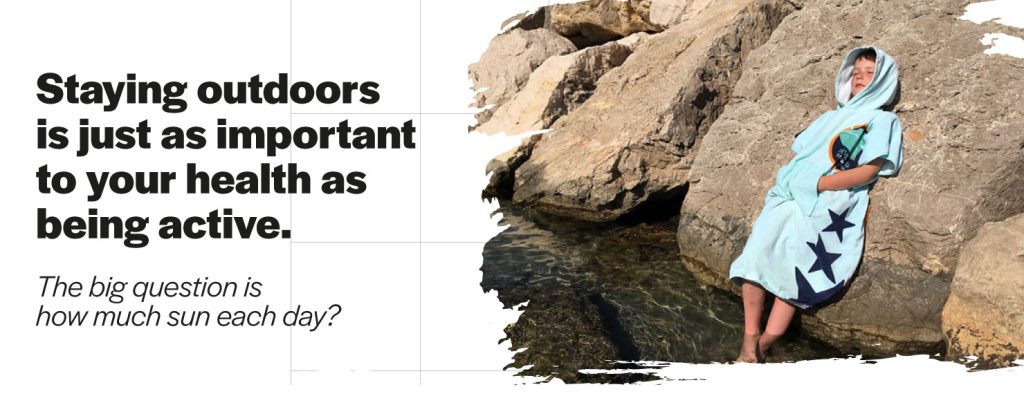Staying outdoors is just as important to your health as being active.
We’ll cover some well-known risks of strong sun later, but first the positives:
- As you go through your childhood and teens, daylight is a literally brilliant way to regulate your growth and maintain your skeleton.
- Your body could be entirely autonomous in the production of vitamin D thanks to sunlight. But a worldwide survey shows that general levels of vitamin D tends to be disastrously low*. Most of us are missing out as a result.
The big question is – how much sun each day?
The darker your skin is, the more exposure you need. Plus remember, lighter skins allow more UV more quickly than darker ones. Dark skin is useful against sunburn, but not vitamin D efficient. What we do know is that it is extremely beneficial to expose some skin to the sun every day, for at least 10 minutes to start those healthy processes. In colder climates, pulling on shorts and a thermal T-shirt for some outdoors activity is the simplest way to tick that box.
There is no scientific evidence for the need to tan – what matters is that you consistently, daily get out to be active outside so that your skin benefits from some sun. Here’s why!
Daylight gains
- Mood: Regular exposure to sunlight alleviates depression and low mood**. Being in the sun gives a general feeling of wellbeing, which improves motivation in every activity!
- Regulates wake/sleep patterns: The day/night cycle is very important for our body to work properly. Different hormones are released during the day (e.g. to keep you alert and focused) and during the night (e.g. relaxing hormones to recover from both physical and mental stress)***. It is easy to understand how important this pattern is for both sport and everyday life. Daylight helps this cycle. Check your blue filter screen settings so you don’t override it****.
- Dark skies alert! On overcast days you are likely to feel tired and sleepy. Your brain responds like it does to nightfall*****. When darkness comes, your eye signals the brain that the day has ended, and it is time for a regenerative sleep. The best way to combat this feeling is to go outside and maximise any glimpse of light we can get!
Vitamin D’s big jobs
- Healthy cartilage: Cartilage cushions your bones, and is regenerated by vitamin D.
- Protecting your bones: With low vitamin D levels, your parathyroid glands weaken your skeleton by borrowing calcium from your bones – you really don’t want this.
- Boosting immune system: Vitamin D has a great impact on helping your body fighting against a vast range of diseases, ranging from common colds to some forms of cancer******.
Your skin and daylight
You’re familiar with UV-A rays, which mess with your collagen and cause ageing, and UV-B rays, which give you a tan (or a sunburn) and which may mess with your DNA and cause skin cancer.
That’s bad, but remember, the risk differs wildly.
- Note the altitude. In the mountains, there’s less atmosphere above you to filter UV rays. Exposure is safer nearer the coast (sea level). Sand, flat water and snow all reflect the rays – grass and darker rocks less so.
- Check season & time of day: In the northern hemisphere, sunrays are more dangerous in the spring when ozone levels are lower. And they are more dangerous at midday than in the morning or late afternoon.
References
*Mithal A., Wahl D. A., Bonjour J. P., Burckhardt P., Dawson-Hughes B., Eisman J. A., Fuleihan G., Josse R. G., Lips P., Morales-Torres J. (2009) ‘Global vitamin D status report and determinants of hypovitaminosis D.’ International Journal of Osteoporosis, 20, 1807-1820.
**Kent S. T., McClure L. A., Crosson W. L., Arnett D. K., Wadley G. V., Sathiakumar N. (2009) ‘Effect of sunlight exposure on cognitive function among depressed and non-depressed participants: a REGARDS cross-sectional study.’ Journal of Environmental Health, 8(34), 1-14.
***Aaranow C. (2012) ‘Vitamin D and the immune system’. Journal of medical investigation, 59(6), 881-886.
****Shechter A., Kim E. W., St-Onge M-P., Westwood A. J. (2017) ‘Blocking blue light for insomnia: a randomized controlled trial’, Journal of psychiatric research, 96, 196-202.
*****Walker, M. (2017) Why we sleep: The new science of sleep and dreams. New York: Penguin/Random House.
******Aaranow C. (2012) ‘Vitamin D and the immune system’. Journal of medical investigation, 59(6), 881-886.
Further reading
BrainMD (2020) available from: 9 Vital Functions of Vitamin D (brainmd.com) [14/01/2021]
Holick M. F. (2003) ‘Vitamin D: a millennium perspective.’ Journal of cellular biochemistry, 88, 296-307.





